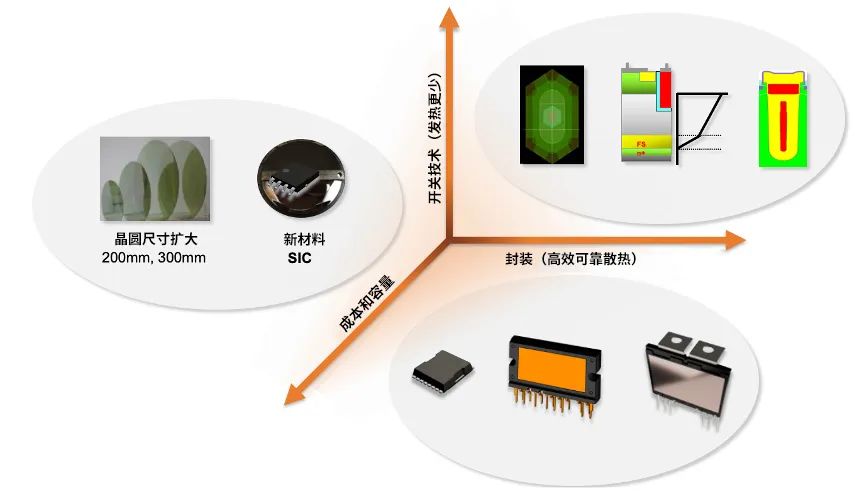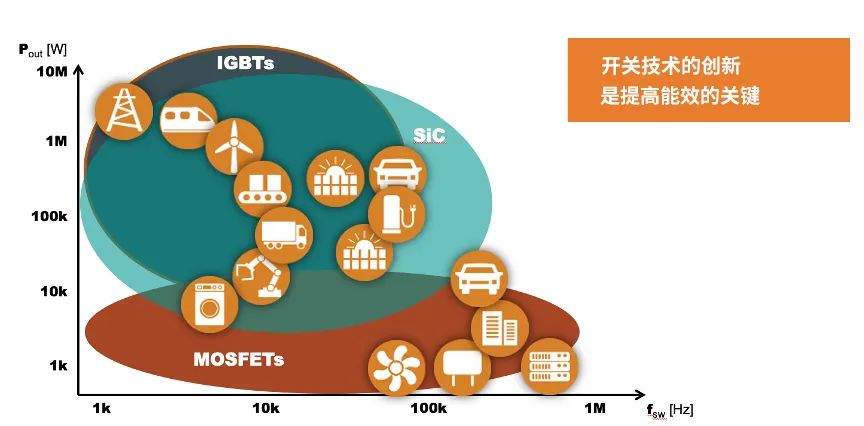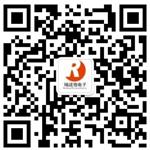 Home
-
Hot News
-
Home
-
Hot News
-
Innovation in power semiconductors drives the construction of next-generation energy networks
Author:netwing Time:2022-04-26 Number Of Views:
"On believes that the next generation of energy networks will be based primarily on renewable energy sources such as solar and wind, combined with energy storage capabilities. In addition, we believe that energy consumption must migrate towards efficient and zero-emission loads such as electric vehicles (EVs) to achieve a viable and sustainable energy network."
Global warming is the greatest challenge facing mankind. Scientists around the world have agreed that the greenhouse gas emissions footprint must be reduced to 2000 levels and the global temperature rise limited to 1.5 ° C to have a sustainable future. To achieve a sustainable energy network for the future, a green transition is imperative and the next generation of energy infrastructure must be environmentally friendly. The company believes the next generation of energy networks will be based primarily on renewable energy sources such as solar and wind, combined with the ability to store energy. In addition, we believe that energy consumption must migrate to efficient and zero-emission loads such as electric vehicles (EVs) to achieve a viable and sustainable energy network.

Figure 1:21st century energy network
Whether it is renewable energy such as solar, wind and energy storage, or efficient loads such as electric vehicles and variable frequency motors, power semiconductors are needed to achieve this. For solar, wind and energy storage, insulated gate bipolar transistors (IGBTs) and silicon carbide (SiC) are used primarily to convert intermittent variable energy sources into sustainable, consistent energy networks that provide zero-emission renewable energy. For emerging electric vehicles and charging infrastructure, both IGBTs and SiC will be the workhorses of the transport energy network for the foreseeable future, facilitating the implementation of zero-emission transport networks. For industrial, building and factory automation, variable frequency brushless direct current motors (BLDC) using IGBTs and metal oxide field effect transistors (MOSFETs); The same goes for human connectivity to the cloud and 5G networks. The latest generation of MOSFET technology is powering efficient power supplies and UPS, providing ubiquitous connectivity to human networks around the world.
Regulations, incentives and substantial returns on investment drive renewable energy growth
In order to achieve a sustainable global energy network for the future, all major economies and regions of the world are adopting different levels of regulations and incentives to decarbonize and limit greenhouse gas emissions. Driven by a combination of regulations, incentives and substantial returns on investment, we expect renewable energy capacity (GW) to double over the next decade. Due to the falling cost of solar photovoltaic panels, solar energy will be the main driver of this growth.
In transport networks with major fossil energy users and the largest carbon emitters, the pace of change in electric vehicles (EVs) will accelerate, given government regulations and automakers bringing a broader portfolio of vehicles with longer driving ranges to market. Another factor accelerating the adoption of electric vehicles is the decline in fossil fuel reserves and the resulting increase in extraction costs.
With the acceleration of industrialization, especially in emerging and frontier economies, the use of electric motors is increasing. In developed countries, building and factory automation will keep growing to offset higher (and rising) labor costs. Regulations in this area will require the use of more efficient motors, which will also require more efficient inverters to drive these motors so as not to waste energy.
About 45% of the world's electricity is consumed by motors, so improving motor efficiency will have a significant impact on reducing energy consumption. Its associated inverters are critical to enabling these improvements, and we expect the use of these devices to double in AC and DC motor applications over the next 10 years. While lower operating expenses will have a beneficial impact, the main driver here is expected to be stricter energy efficiency regulations.
A key driver of zero emissions
Innovation in power semiconductors will be a key driver of renewable energy and efficient load energy networks. In order for power semiconductors to help us continue to use energy efficiently and achieve zero emissions, progress is needed in the key areas of switching technology performance, efficient packaging, cost and capacity.

Figure 2: Three key drivers of zero emissions
Whether MOSFETs, IGBTs or SiC devices, the key driver for switching will be technological innovation to improve the operating efficiency of the switch while reducing static and dynamic losses. Another key variable is efficient packaging, because there is no really ideal switch, and there will always be some loss that must be released from the semiconductor chip in the form of heat. From a business perspective, cost is always an important factor, and with the exponential growth of electric vehicles, renewable energy infrastructure and cloud power, the supply chain resilience of these technologies becomes one of the most critical factors.
Technological innovation of power semiconductors
In semiconductor technology, the optimal switching technology is often selected depending on the power level and switching frequency of the particular application, resulting in extremely high system-level energy efficiency. The only way to deliver the next generation of efficient and sustainable networks is through continued innovation in all of these technology areas.

Figure 3: Switching technology will be application-specific
On is a leader in silicon (Si) technology, MOSFET and IGBT technology, and is investing heavily to leapfrog SiC competitiveness and deliver superior switching technology to the market.
SiC is a third-generation semiconductor, also known as wide band gap (WBG) material, which has superior properties to silicon. The main performance driver is the higher density cell structure that can be achieved. This higher cell density improves efficiency, allowing EVs to offer longer driving ranges using the same battery pack.
For IGBTs, the wafer thickness and deep field stop layer of the silicon wafer become critical to improve efficiency and increase power capacity. For MOSFETs, the key drivers are cell spacing and cell density. On On continues to drive efficiencies by reducing these two factors.
Packaging innovations help improve heat dissipation and reliability. Depending on the application, discrete devices or modules can be used. In very high power (150kW-250kW) applications such as electric vehicles, the main drive module may be ideal.
There are three key areas of packaging innovation: interconnect, materials and modules. In the interconnect field, moving from solder interconnects to sintering or sintering clamps can reduce contact resistance and thus improve reliability.
In the materials sector, key innovations involve the sintering and eventual embedding of silver and copper, which can extend life cycles and increase power density. In the main drive module, package thermal resistance is a key parameter. Here, the use of double-sided direct cooling significantly improves thermal resistance, thereby increasing power density.
Reliable and resilient supply chain
In addition to technological advancements in switching and packaging, On Semiconductor provides a reliable and highly resilient supply chain. Although On uses its Fab-lite model, it is one of the few power semiconductor companies that can process its own wafers in-house, providing a solid supply chain. The recent acquisition of GT Advanced Technologies ensures a highly vertically integrated and resilient supply chain for SiC, one of the key technologies for sustainable future growth. Supply chain resilience is enhanced through long-term partnerships with third parties, including fabs and foundries.
Sum up
The next generation of efficient energy networks will be built on renewable energy with storage capabilities, while making very efficient use of networks powered by electric vehicles, variable frequency motors and efficient loads. Outstanding silicon and SiC switching technology, efficient and reliable packaging, and resilient supply chains are key drivers for a future of net zero emissions.
On is a recognized leader in silicon-based devices and is investing heavily to become a leader in SIC-based devices, continuing to provide smart and efficient power semiconductors to help the industry achieve net zero emissions and build a sustainable future.
* The company is neutral in its statements and opinions and does not provide any warranty, express or implied, as to the accuracy, reliability or completeness of the content contained herein.
Statement: The article information from the network collection, copyright belongs to the original author, if there is infringement please contact us to delete; The content of the article is the author's personal point of view, Ruizheng microelectronic reprint only as to convey a different point of view, does not represent Ruizheng micro's approval or support for the point of view, if you have objections, welcome to contact Ruizheng Microelectronic.
Previous Article:Toshiba pulls out of LSI chip market! 770 employees affected
Next Article:On Mei's Shanghai Global distribution center will soon resume work
 Contact Us:0755-82760106
Contact Us:0755-82760106
 Proposal:0755-83260671
Proposal:0755-83260671
 Mailbox:jessie@ruizhengwei.com
Mailbox:jessie@ruizhengwei.com
 Address:18F, Building A, Rongde International, Henggang Street, Longgang District, Shenzhen City, Guangdong Province
Address:18F, Building A, Rongde International, Henggang Street, Longgang District, Shenzhen City, Guangdong Province

Skype


Copyright © 2024 Shenzhen Ruizheng Microelectronics Co., Ltd Copyright Record number: Yue ICP Bei 2024178191-1 Background Login